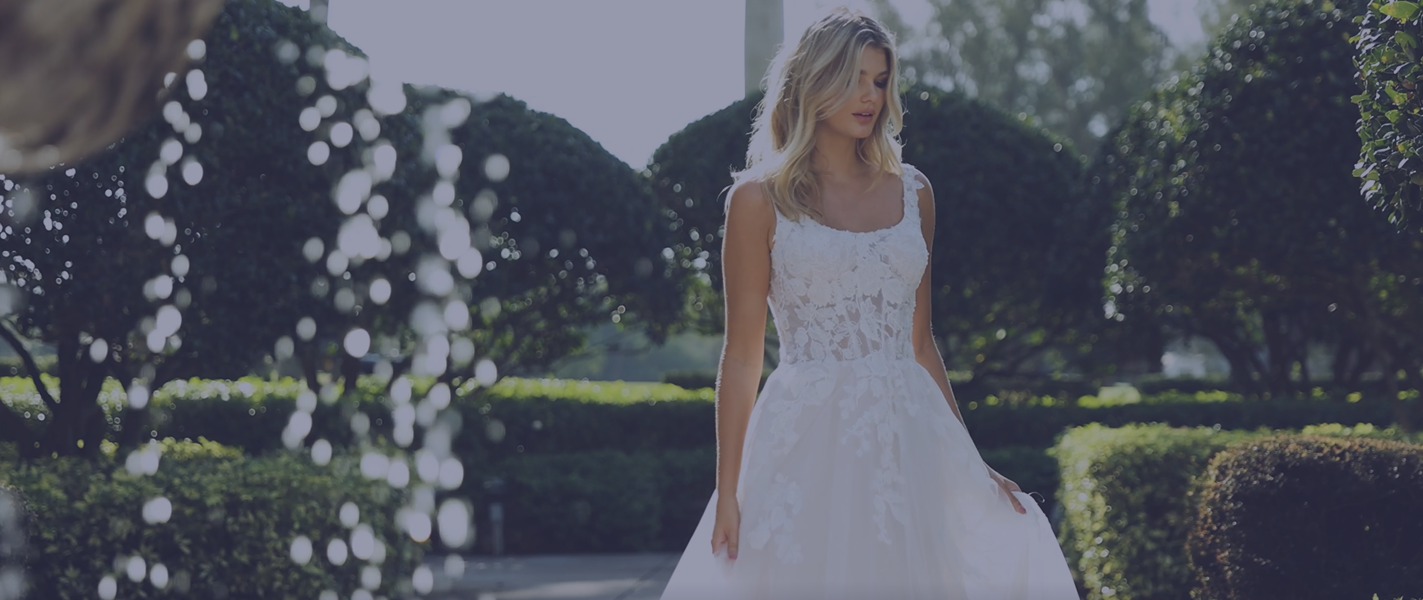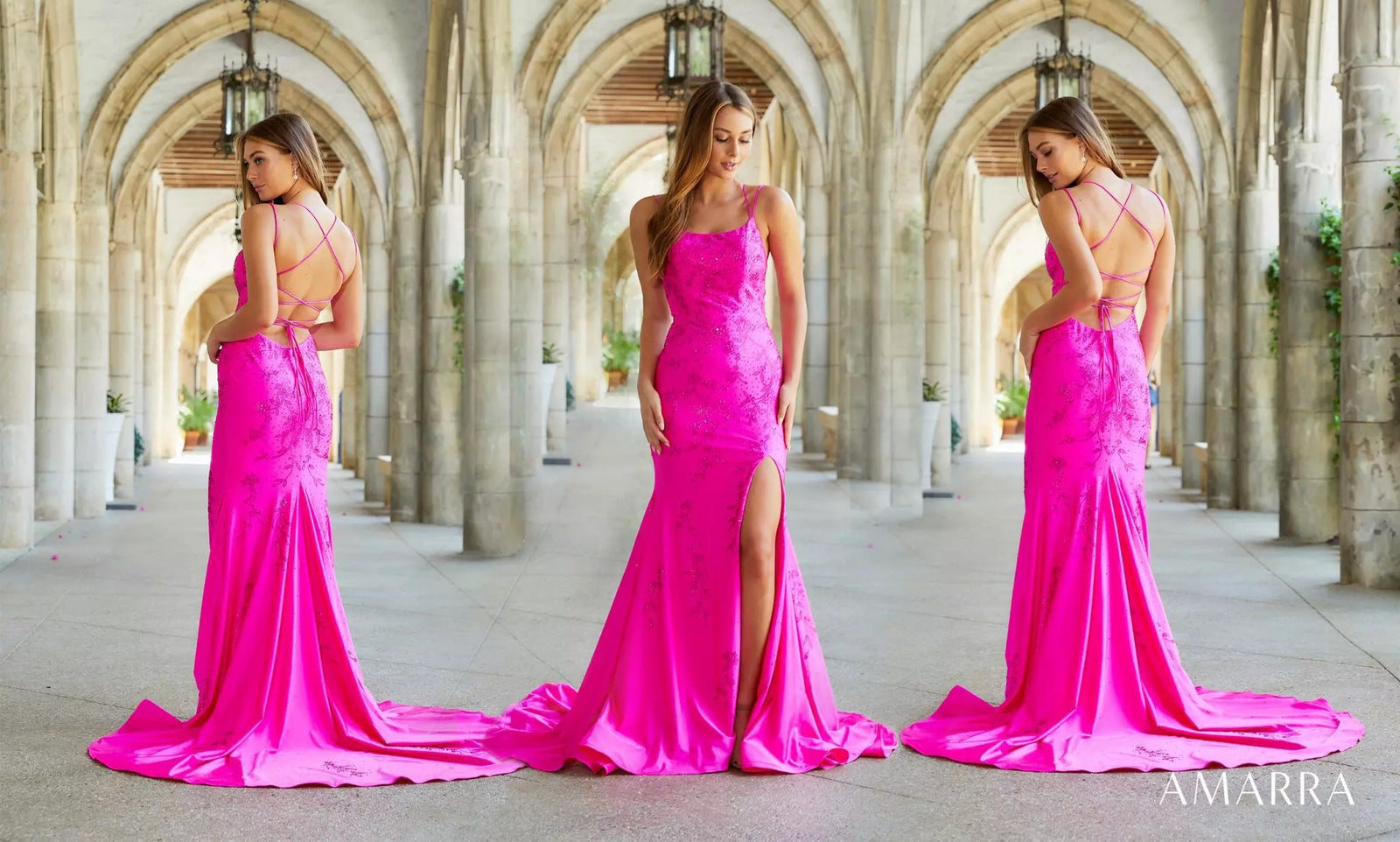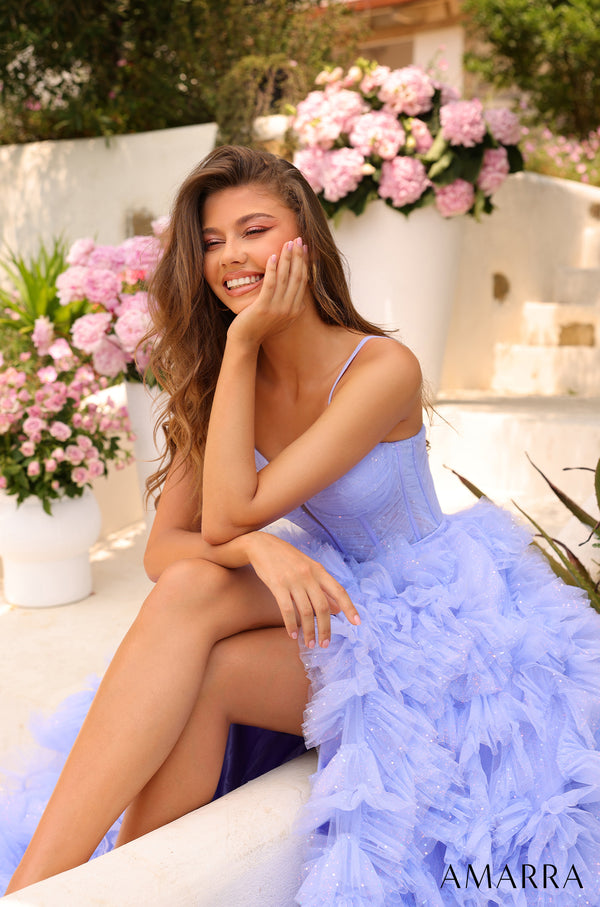Your Cart is Empty
0
Your Cart✕
Your Cart is Empty
0
Your Cart is Empty



Shopping for a formal dress can be confusing work. With so many styles, patterns, and fabrics available, you can get overwhelmed quickly. That’s where we come in. Today, we’re going to demystify one aspect of formal dress shopping: THE FABRICS.
What follows is a rundown of all the most common fabrics used in prom dresses, evening dresses, and wedding dresses. Scroll down and forget about all your fabric dilemmas.
Satin is one of the three main textile weaves, the others being twill and plain weave. The satin weave results in a fabric that is soft, shiny, and elastic with a stunning drape. Satin is characterized by a soft, lustrous finish on one side, with a duller one on the other.
There are a number of different types of satin, some of them are:
A lightweight satin with a lovely drape and a sleek sheen, Bridal Satin is, as its name suggests, a common choice in wedding dress fabrics.
From the French word for “charmer”, this satin has an easy drape and is very lightweight. It has the typical characteristics of satin with a dull back and shiny front.
Crepe back is a reversible type of satin. One side has the traditional, lustrous satin finish, while the reverse has a crepe texture. Talk about killing two birds with one stone!
Duchesse satin is a lustrous and elegant fabric that is shiny, luxurious, and heavy. This is typically made from silk fibers, though it can also contain rayon, acetate, or polyester filler. Due to its luxurious feel, it is also a great prom dress fabric.
A piece of mid-weight fabric with a smooth satin feel, Peau Satin stands out for its unique finish. Rather than have a lustrous front side, it’s instead matte with a muted shine.
Silk material is known for its strength, durability, luster, and shine. It has a long trading history all over the globe. The epitome of luxury, it’s a popular textile in high-end and couture fashion design.
There are a few different types of silk, including:
Dupioni Silk is a tightly woven, plain-weave, double-thread silk with a crisp, textured finish. It’s woven with different-sized warp and weft threads, producing a strong, durable material with a lustrous shine.
Soft and floaty, crêpe-de-chine is a plain-weave with a distinct crimped texture and muted luster. It has an excellent drape and is very lightweight, making it ideal for summer dresses, blouses, and lingerie.
Georgette is made with highly twisted yarns making it a sheer, lightweight, plain-weave material with a coarse texture. Often mistaken for Chiffon, Georgette is a heavier fabric that nonetheless has the same characteristics in terms of holding a beautiful drape and not creasing.
Velvet is a medium-to-heavy-weight silk fabric created with multiple wefts and warps. It’s typically soft and has an amazing drape with a premium shine.
Crushed velvet is traditional velvet that has been made to look “crushed”. This is achieved by pressing the pile in different directions or twisting the fabric while wet. This gives the material a shiny, pattered finish with a unique texture.
Shantung is also called Tussah silk and is made with short, coarse fibers. It’s stiff to the touch while remaining lightweight and airy. Because Shantung doesn’t crease it’s excellent for use in shirts, trousers, and dresses.
Fine, sheer, and lightweight, Organza is an open-weave fabric that produces a smooth sheen. Though it’s one of the thinner materials on this list, its highly twisted threads make for a strong, durable fabric. Organza is often used in collars, facings, veils, and evening wear.
Chiffon is an elegant, sheer fabric with a mildly rough, gauze-like texture and a fine drape. Created from fine, twisted fibers, Chiffon silk is lightweight with a slight stretch to it. This is a great fabric for layering and creating volume. It’s commonly grouped with wedding dress fabrics and evening dress fabrics.
French for “skin of silk”, this fabric is medium-weight and dully lustrous. This fabric was traditionally always silk but it can be made from manufactured fibers as well.
Jacquard fabric refers to a pattern that is woven directly into certain material, rather than being printed, stamped, or embroidered onto the fabric. It can be any type of weave and can be crafted from any sort of yarn.
A type of Jacquard, Brocade fabric describes the aesthetic of fabric rather than the weave. They’re fabrics with an elaborate embroidered or embossed surface effect, usually achieved with different ground and pattern weaves.
Another type of Jacquard, Damask fabrics are patterned with a ground of one weave and designs in other weaves. This gives the areas of the pattern a sheen that reflects light.
Derived from the flax plant, Linen is one of the most widely used fabrics in the world. It’s strong, durable, and absorbent making it ideal for use in bedding materials. Linen clothing is notoriously durable and great for temperature regulation, keeping the wearer cooler in hot summers and warm in the winter months.
Faille is a type of material that is woven with a faintly ribbed pattern, resulting in a unique, textured feel. Often used in evening dress fabrics, it can be created using cotton, rayon, or silk.
The lace fabric is a beautiful and delicate textile. It has a unique, web-like open construct and is made from yarn or thread. The most common yarns used to create silk include cotton, linen, or silk which are braided, looped, and twisted to give lace its unique appearance.
Taffeta is a crisp, shiny fabric that is typically made from polyester, nylon, or silk. It creates stunning silhouettes and is considered great for use as prom dress fabrics, wedding dress fabrics, evening dress fabrics.
Tulle is a very fine, lightweight, stiff netting. It can be made from various fibers including nylon, silk, rayon, and polyester. It’s commonly included in wedding dress fabrics as it can be used for both the gown and the veil.
Choosing between the numerous prom, wedding, and evening dress fabrics can be daunting. However, they needn’t be. With this primer on formal dress fabrics, you’ll be well on your way to figuring out the best possible one for your next big occasion.
Need some inspiration for your next dress? Check out our Instagram for tips and ideas.

 Prom 2024: Popular Long Prom Dresses
Prom 2024: Popular Long Prom Dresses  Guide for Finding the Perfect Prom Dress Both Online and in Stores
Guide for Finding the Perfect Prom Dress Both Online and in Stores  Trending Lace Prom Dresses: 5 Chic Gowns You Can Not Miss
Trending Lace Prom Dresses: 5 Chic Gowns You Can Not Miss  Top 5 Pink Prom Dresses For Prom 2024
Top 5 Pink Prom Dresses For Prom 2024  Slay the Night: Redefine Elegance with Red Prom Dresses
Slay the Night: Redefine Elegance with Red Prom Dresses  Hotness Alert: How to Rock Sexy Formal Dresses Like a Pro
Hotness Alert: How to Rock Sexy Formal Dresses Like a Pro  Top 5 Navy Blue Prom Dresses For Prom 2022
Top 5 Navy Blue Prom Dresses For Prom 2022  Finding The Perfect Prom Dress: What to wear to Prom 2024?
Finding The Perfect Prom Dress: What to wear to Prom 2024?  Best Two-Piece Dresses For Prom 2024
Best Two-Piece Dresses For Prom 2024  Your Ultimate Guide to Discovering the Perfect Prom Dress
Your Ultimate Guide to Discovering the Perfect Prom Dress Join our newsletter and and be the first to hear about all the things we have coming your way.
